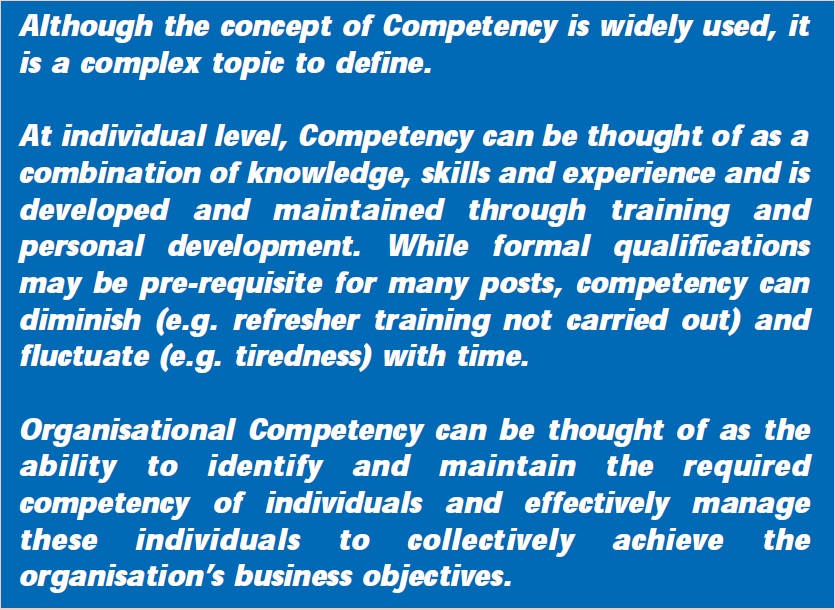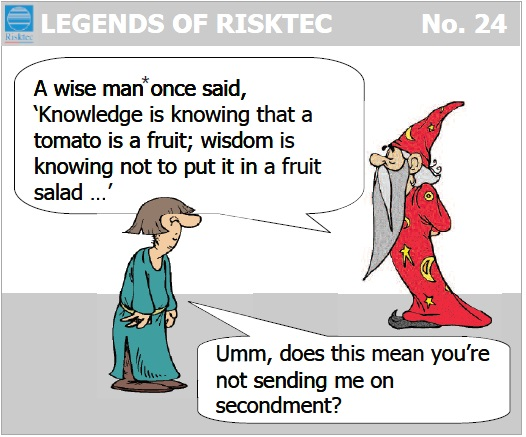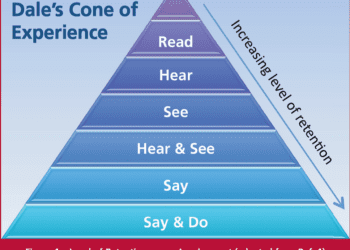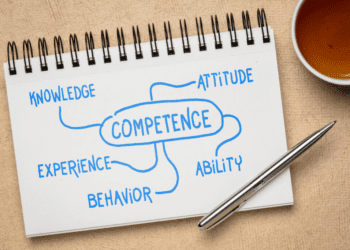Building competence through resourcing
Organisations typically look to external consultants to bridge a ‘gap’ in technical know-how or manpower. Generally, extra resource is needed to support specific projects or to gain access to expertise that the organisation doesn’t already have. A range of commercial models can be utilised, including:
- Secondments or placements
- Packaged support
- A mixture of these
In recent years, in the area of technical safety, the resource gap has been widened by skill shortages, which has been exacerbated by ageing demographics in some countries where large numbers of experienced personnel are retiring. Gaps that may have been considered short-term can become much longer term as organisations compete for scarce resources.
Approaching resourcing decisions more strategically can provide an opportunity to build the competence of an organisation and realise additional benefits, such as:
- Gaining the capability to do work ‘in-house’ in the future, thus reducing costs and enabling greater flexibility.
- Becoming a more informed customer, leading to a sharper focus on what’s required (and what’s not), promoting better value from similar future work.
- Providing an opportunity to up-skill the organisation, creating richer career opportunities and helping staff retention.
Below, we explore the potential for different resourcing solutions to build organisational competence and capacity.

SECONDMENTS OR PLACEMENTS
Often called ‘body-shopping’, consultants are contracted to work at the organisation’s premises under its direct control and supervision. Usually this approach offers very limited opportunities for competence building. However, by careful definition of the requirement and selection of the consultant, it is perfectly feasible to include knowledge sharing, supervision and mentoring as part of the role. For example, the consultant could have the responsibility for mentoring inexperienced client personnel to help ensure that they are able to perform this work in the future. Of course, for this approach to be successful, in addition to the technical skills, the consultant selected will also need to have the skills and willingness to provide coaching.
PACKAGED CONSULTANCY SUPPORT
Many organisations successfully package their requirements into specific deliverables and select suppliers through tendering or framework agreements. Packages can vary in size and complexity from small specialised studies, through to full safety cases, for example. The work is largely conducted from the supplier’s offices with close contact being maintained with the client throughout. With smart planning and specification, this approach provides real opportunities for knowledge transfer and competence building in the client organisation. For example:
- Team members from the client organisation could spend time working with the supplier’s team to deliver the work, thus learning ‘on-the-job’ while reducing external costs. Moreover, gaining exposure to the workings of the supplier will likely yield a much wider learning experience which will enhance the overall benefit to the client.
- The scope of work could include specific requirements to ensure that the supplier undertakes a comprehensive hand-over of the work undertaken, information generated and lessons learned.
TRAINING
Training represents the most common means of building competence. Whilst effective in isolation, it is much more effective if combined with the organisation’s approach to resourcing. This enables training to be specifically tailored to reflect the real work and challenges faced by the client and delivered by personnel with a good understanding of these. Training can be timed to coincide with key project stages, making it more focused and relevant than generic training. As such, learning can be tested and reinforced in the workplace.
FINAL THOUGHTS
On top of the considerable challenges associated with operating hazardous facilities, organisations are often faced with the additional challenge of skill shortages. With a bit of forward planning and creative thinking it is possible for organisations to maintain and build their competence for the long term, whilst meeting shorter term resourcing pressures.

Further reading
Getting the best out of consultants (parts 1 and 2), RISKworld, Issue 7 and Issue 8.
This article first appeared in RISKworld Issue 24







